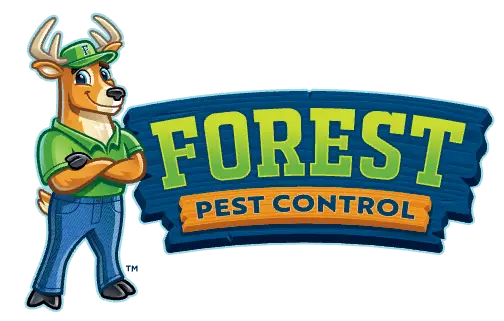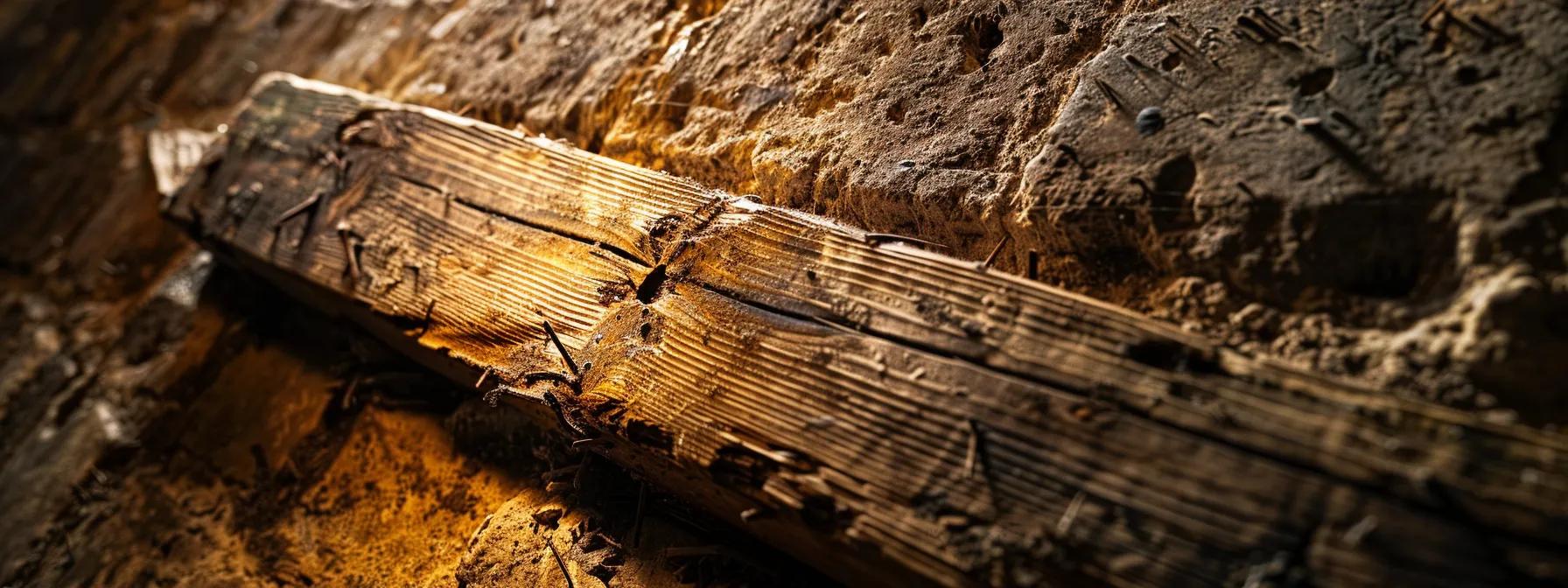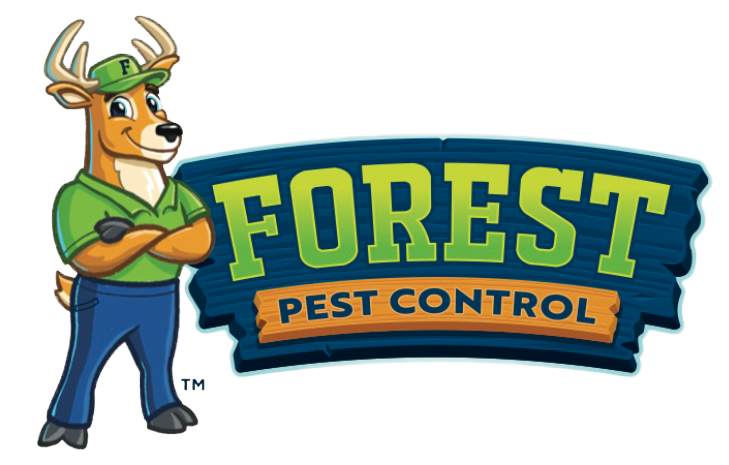Signs Your Home May Be Infested With Termites
Termites can severely damage residential structures if left unchecked, leading to expensive repairs and safety hazards. Homeowners in Central Florida areas such as Orange, Seminole, Lake, Volusia, and Osceola Counties should be vigilant for early termite infestation signs and consider termite control measures as part of their routine maintenance. Moreover, many pest professionals also offer ant-extermination and bed bug extermination services to ensure comprehensive protection for your home. This article outlines key indicators—from live termites and discarded wings to wood damage and subtle auditory clues—and provides actionable steps for early detection and remediation. Forest Pest Control has served the greater Orlando area since 1991 using Integrated Pest Management (IPM) to deliver safe, effective treatments that protect your property and the environment; when issues arise, it is wise to choose pest control services that specialize in these matters. Several companies further extend their expertise with wildlife removal and rodent exterminator solutions to address a variety of pest issues. Read on to learn how to inspect your home for termite activity and take prompt action to preserve its structural integrity.
Spotting Live Termites or Their Discarded Wings
Early detection begins with observing live termites or remnants like discarded wings, which can sometimes signal that additional measures such as rodent exterminator may be needed. For effective termite control measures, it is important to monitor these signs closely. In addition, some property owners inquire about bed bug extermination during their routine inspections to ensure comprehensive pest management. These wings indicate a colony is in its reproductive swarming phase. Swarmers may be seen flying or landing near windows and door frames, suggesting that you might consider choose pest control services if an infestation is suspected.
Identifying Swarming Termites Indoors or Outdoors
Swarming termites are the reproductive portion of the colony and become active during warm, humid months. Homeowners might spot clusters of these soft-bodied insects inside basements, near doorways, or outdoors, which can signal the need for effective termite control. In such cases, many choose pest control to manage these infestations. For a comprehensive approach, services often offer termite control and ant-extermination solutions, as their presence suggests an established colony is nearby and ready to disperse for new colony formation.
Finding Piles of Termite Wings on Windowsills or Floors
After their nuptial flight, winged termites shed their wings, which accumulate in small piles on windowsills, door frames, or floors in well-lit areas. In some cases, these piles attract additional pests, prompting homeowners to consider ant-extermination measures. Though small and sometimes requiring a magnifying glass to see, these wing piles should prompt a thorough inspection, especially where condensation is common and where signs of other infestations, possibly requiring a rodent exterminator’s attention, might be observed. Homeowners should consult experts in termite control and choose pest control methods to assess any potential issues stemming from these infestations. In rare scenarios, unexpected pest activity might also call for wildlife removal to safeguard the property.
Recognizing Worker or Soldier Termites in or Around Wood
Worker and soldier termites, usually hidden within wooden structures or mud tubes, may emerge if the wood decays. Workers are typically pale and soft, while soldiers have robust mandibles. Their appearance around beams, frames, or furniture indicates termites have infiltrated your home’s core structure, potentially causing severe long-term damage and inviting issues that might require a rodent exterminator. Immediate evaluation by a professional from choose pest control, known for expertise in termite control, ant-extermination, and bed bug extermination, is advised.
Differentiating Termites From Ants Based on Appearance
Though similar in appearance, termites (termite control) have straight, uniform bodies with soft, light-colored exoskeletons, while ants (ant-extermination) show pinched waists and varied colors. Winged termites have equal-sized, delicate wings in contrast to the differing wing sizes of ants. In many cases, professionals may also advise bed bug extermination and rodent exterminator services as part of an integrated approach that can include wildlife removal when dealing with multiple pest issues. A side-by-side inspection can prevent misidentification and ensure that one can choose pest control when addressing these issues.
Discovering Evidence of Termite Pathways and Sheltering
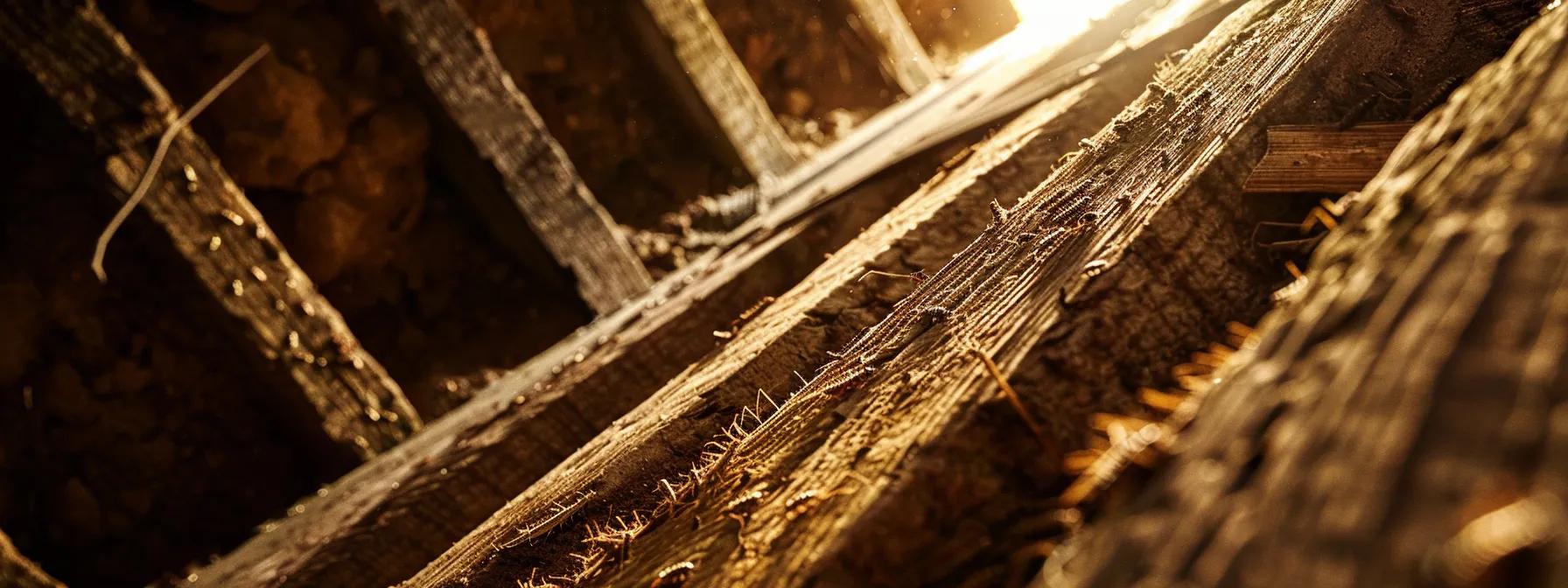
Termites create concealed pathways for safe travel and moisture regulation. These routes, often found in crawl spaces, beneath floors, or behind baseboards, enable them to move efficiently between their nest and food sources. Disrupting these pathways can help limit termite activity, which is why many experts recommend termite control as a proactive solution. In some instances, integrated approaches such as ant-extermination, rodent exterminator, and wildlife removal are implemented to address a spectrum of pest challenges. In some cases, homeowners are advised to choose pest control services to ensure that any infestation is comprehensively addressed.
Locating Mud Tubes on Foundation Walls or Crawl Spaces
Mud tubes, constructed from soil, water, and termite saliva, shield termites from predators and the elements. These pencil-sized, serpentine tubes found along foundation walls, in crawl spaces, or near utilities are clear signs of active subterranean termite activity. For effective management, termite control measures are recommended, so it’s wise to choose pest control to ensure thorough care. In some cases, integrated services including ant-extermination and rodent exterminator evaluations may be necessary to address any additional pest concerns. Their presence necessitates a professional assessment without delay.
Recognizing Termite Tunnels Within Damaged Wood
Termites often create hidden tunnel systems in wood to move undetected, making effective termite control and ant-extermination essential in many areas. These smooth, maze-like channels weaken the wood by tunneling inside it. If wood appears thinner or softer than normal, even if the damage is not immediately visible, it should prompt a professional inspection and encourage homeowners to choose pest control or consult a rodent exterminator if further infestations are suspected.
Finding Earthen Packing in Cracks and Crevices
Subterranean termites use earthen packing—a compacted mixture of soil and saliva—to seal off cracks and crevices. In many cases, noticing this dark material near window frames, doorways, or where pipes enter the building signals active termite behavior and potential infestation, which may warrant immediate termite control measures. If you suspect any pest-related concerns, you might want to choose pest control services for a comprehensive inspection. Additionally, if there are signs of other intruders, such as ants, you may also consider ant-extermination as part of an integrated approach to property care.
Noticing Termite Galleries in Wooden Structures
Termite galleries are internal channels within wood formed as the colony expands, often prompting the need for termite control in affected structures. In many cases, integrating ant-extermination methods can help address coexisting pest issues. These hollow, irregular corridors compromise structural integrity. The presence of soft or porous wood accompanied by such galleries demands a thorough evaluation by a pest control professional, who may also consult a rodent exterminator if secondary infestations are suspected, thereby helping property owners choose pest control measures before extensive damage occurs.
Identifying Wood Damage Indicative of Termite Activity
Termite damage to wood can become apparent through softened surfaces, blistered areas, or wood that crumbles easily. Detecting these symptoms early can help halt further deterioration.
Observing Hollowed-Out or Soft Wood in Your Home
Hollow or soft wood is a classic sign of termite damage. Consulting with termite control professionals can help assess the situation early. Additionally, ant-extermination measures might be needed if the infestation begins to affect nearby structures. Termites consume the wood’s interior, leaving a thin exterior that appears intact until probed. This spongy quality increases the risk of sudden structural failure, especially in older homes where a rodent exterminator might also be required to address other pest issues. Regular inspections of beams, door frames, and support columns are recommended, so it’s wise to choose pest control to ensure early detection and remediation.
Seeing Blistered or Darkened Areas on Wooden Surfaces
Localized blistering or darkening of wood may result from termite-induced moisture retention and heat buildup. For instance, effective termite control measures which include ant-extermination can mitigate these symptoms before severe damage occurs. Although sometimes mistaken for weathering, concentrated areas of such discoloration can confirm active tunneling by termites, particularly in moisture-prone spaces like basements where rodent exterminator and bed bug extermination services might also be required. Homeowners are advised to choose pest control services to ensure timely and professional intervention.
Finding Wood That Crumbles Easily When Probed
If wood crumbles under slight pressure, it is a strong indicator of advanced termite damage and may warrant termite control intervention. In some cases, professionals may also recommend ant-extermination services to safeguard adjacent wooden structures. As termites digest cellulose, the wood loses its strength and coherence, highlighting why it’s important to choose pest control solutions promptly. In situations where damage is extensive, weakened structures can attract other nuisances, sometimes necessitating wildlife removal interventions. This degradation, detectable in decorative paneling or support beams, can compromise the structure’s safety and should be immediately addressed.
Detecting Maze-Like Patterns Beneath Wood Surfaces
Intricate, maze-like patterns visible on the underside of wood are the traces of termite galleries, often requiring termite control measures. In some cases, ant-extermination might also be necessary if secondary infestations occur. These hidden channels often extend further than visible damage suggests. Tapping the wood and listening for hollow sounds can help detect this dangerous internal network, and consulting a rodent exterminator can provide additional insight into the extent of the infestation, so it’s best to choose pest control for a comprehensive, professional inspection.
Checking for Sagging Floors or Ceilings as a Sign of Infestation
Termite damage can weaken the structural integrity of floors and ceilings, causing them to sag. Implementing effective termite control can help mitigate further structural issues. In many cases, integrating ant-extermination strategies alongside termite control plays a vital role in protecting your property. This unevenness, often seen in older homes or in buildings with a history of infestation, signals extensive internal damage; sometimes, even rodent exterminator services and wildlife removal measures might be necessary. Should you notice any unexpected sagging, be sure to choose pest control professionals for immediate evaluation.
Recognizing Termite Droppings or Frass
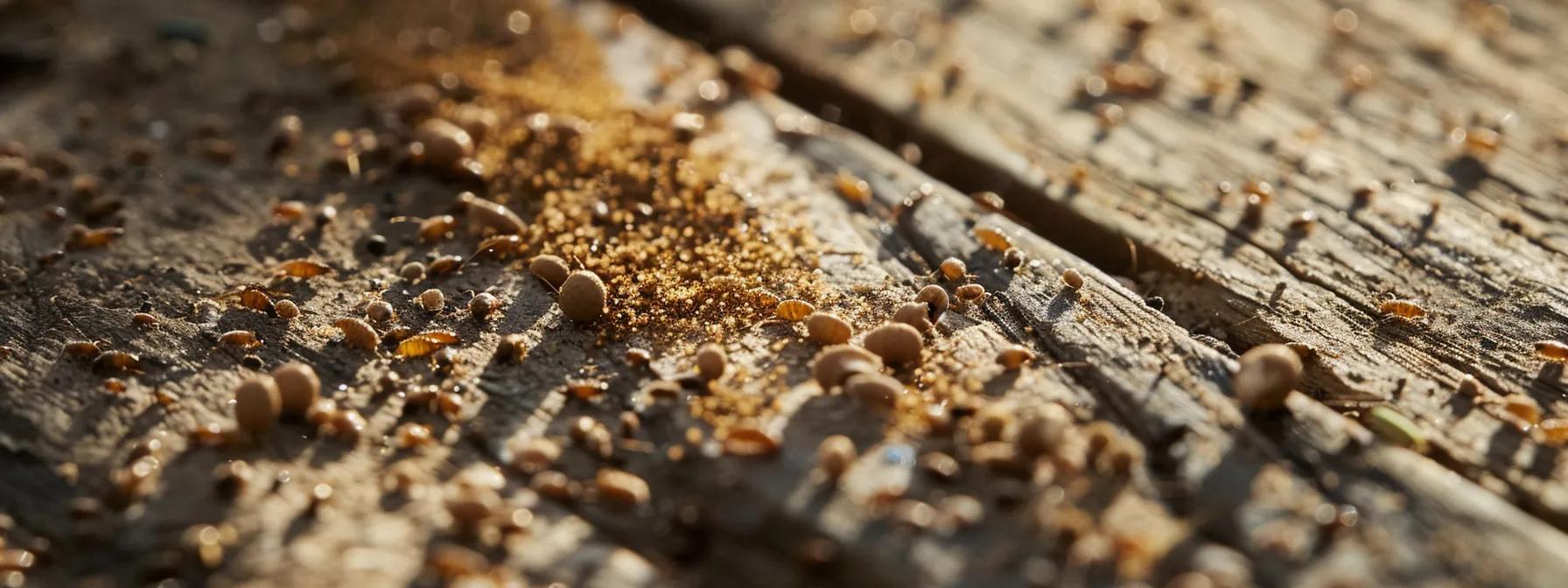
Termite droppings, known as frass, look like small, pellet-like fragments and accumulate near feeding areas. Recognizing these signs, effective termite control measures are essential, and many experts advise that homeowners choose pest control services to assess the situation further. In some cases, professionals may also recommend ant-extermination procedures to ensure that secondary pest issues are addressed, and if other pests are observed, wildlife removal or a rodent exterminator might be consulted for a comprehensive solution. Although they may resemble sawdust, termite frass is uniform and concentrated, indicating active feeding.
Finding Small Pellet-Like Droppings Near Wood
Typically resembling coarse sawdust, these small droplets are found at the base of wood, on window sills, or in room corners. Their uniform size distinguishes them from random debris. Collecting samples for comparison with known images or consulting a pest control professional—and even choose pest control measures—can confirm termite activity. In such cases, prompt termite control is advised for effective management. In addition, if you observe other signs of infestation, you might consider ant-extermination services or consult a rodent exterminator, and in some situations, wildlife removal may also be necessary.
Distinguishing Termite Frass From Sawdust or Dirt
While both termite frass and sawdust may seem similar, frass is distinguishable by its consistent shape, color, and concentrated location near damaged wood. Clusters of this uniform material should be investigated as they strongly suggest termite infestation, often prompting immediate termite control measures. Furthermore, an integrated approach including ant-extermination and rodent exterminator strategies may help address any concurrent infestations. In addition, it may be wise to choose pest control services to ensure all potential issues are properly addressed.
Locating Frass Piles in Areas of Suspected Activity
Frass can also collect in hidden areas such as wall voids, beneath cabinets, or near baseboards. In some instances, these signs may not only indicate a nearby termite nest or active feeding site but might also hint at additional issues that require a rodent exterminator’s attention. Moreover, in certain scenarios, problems requiring ant-extermination or even bed bug extermination can emerge concurrently with termite infestations, reinforcing the need for a comprehensive inspection and prompt termite control intervention. In cases like this, it’s wise to choose pest control when seeking professional help.
Understanding How Frass Indicates Drywood Termite Presence
Drywood termites, which live without direct soil contact, leave noticeable frass trails on surfaces and in crevices. These irregular patterns not only help differentiate drywood termites from subterranean species, but they also provide valuable clues for targeted treatment and termite control. Homeowners are encouraged to choose pest control specialists to address infestations effectively, and in some cases, to incorporate ant-extermination strategies as well as consult a rodent exterminator when additional pest challenges arise.
Hearing Sounds Associated With Termite Infestations in Homes
Unusual sounds within walls or woodwork—such as clicks, taps, or rustling—can indicate termite activity. Although these sounds are often faint, they reveal hidden colonies at work.
Detecting Quiet Clicking or Tapping Noises Within Walls
Termites create soft clicking or tapping sounds as they use their mandibles in tight spaces or move collectively within galleries, which is a common indicator for termite control issues. In some cases, these signs might accompany noticeable ant activity that could require ant-extermination measures. These noises may be more noticeable during quiet periods such as nighttime. Homeowners noticing such sounds should consider having a professional perform a sound-based inspection and choose pest control for a comprehensive approach to termite control.
Identifying Head-Banging Sounds From Soldier Termites
Soldier termites sometimes produce abrupt head-banging sounds when disturbed. This unusual, intense noise not only serves as a defensive signal but also highlights the potential need for ant-extermination strategies. It should be taken seriously as it may indicate an aggressive colony needing immediate attention, possibly requiring rodent exterminator consultation due to secondary pest issues. Effective termite control measures can help manage the situation alongside bed bug extermination protocols, so it’s wise to choose pest control services before the problem escalates. In some instances, wildlife removal might also be necessary to secure the surrounding environment.
Noticing Faint Rustling Sounds Emanating From Woodwork
A soft rustling noise near wooden structures or within walls may be dismissed as settling or wind. However, when these sounds persist in one area, they can indicate active termite feeding, often calling for termite control measures or even ant-extermination efforts if other infestations are suspected. Documenting such occurrences and consulting a choose pest control professional, and possibly a rodent exterminator, is recommended.
Observing Other Subtle Indicators of Termite Presence in Your House
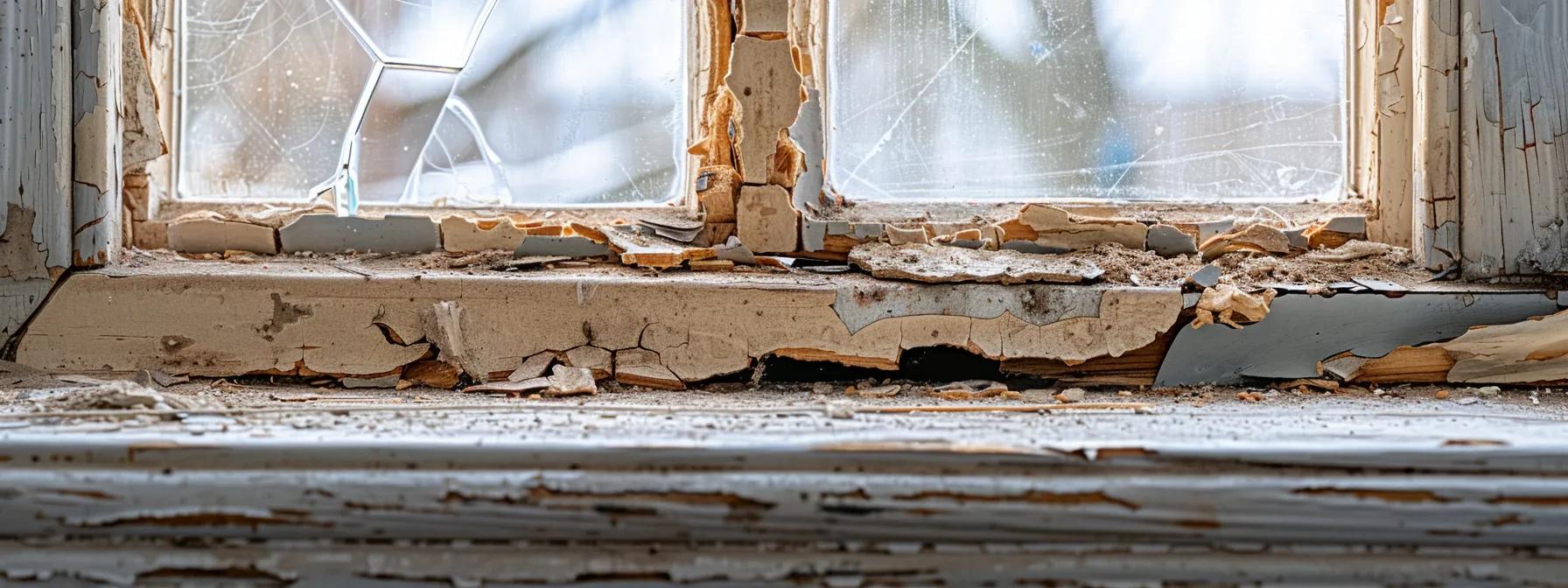
Termite infestations can also produce subtle signs that combine with other symptoms to form a clear picture. These include issues with windows and doors, peeling paint, and unusual odors.
Stuck Windows or Doors Resulting From Wood Warping
Warpage from termite damage often causes windows and doors to stick or misalign. In many cases, implementing termite control measures early on can help reduce complications, especially when combined with bed bug extermination and wildlife removal efforts. Such operational problems, especially when recurrent and paired with other signs of infestation, should lead to a professional inspection of the nearby wooden structures, where experts might advise to choose pest control techniques and even consider ant-extermination and to contact a rodent exterminator when additional pest issues are evident.
Peeling Paint That Resembles Water Damage
Peeling or blistering paint on walls or wood might be misinterpreted as water damage but can also result from termite-induced moisture, highlighting the importance of termite control. In many cases, experts advise that alongside termite control, a thorough ant-extermination process should also be considered to prevent further structural damage. When seen in isolated spots near wood, this peeling can signal hidden termite activity, so it’s wise to choose pest control services and to consult a rodent exterminator for a comprehensive inspection. Additionally, if signs of infestations surface in other areas, professionals may also recommend bed bug extermination or wildlife removal to secure your property.
Tight-Fitting Doors or Hard-to-Open Windows
Damage to door and window frames from termite feeding – an issue often best addressed with termite control – may cause sudden tightness or jamming, affecting both security and ventilation. It is wise to choose pest control services, incorporating choose pest control and ant-extermination measures in these circumstances, as further investigation might even suggest the need for a rodent exterminator and wildlife removal. These issues, especially if unexplained by recent changes, warrant further investigation.
Identifying Damp or Musty Odors Linked to Termite Nests
A persistent, musty or damp odor from walls or crawl spaces may stem from termite nests (termite control) and wood decay. In some cases, subtle evidence such as small droppings or gnaw marks suggests that calling a rodent exterminator or using ant-extermination services might be warranted. This smell, combined with other physical signs, further strengthens the suspicion of an active infestation within the home. In such cases, it is wise to choose pest control that also offers wildlife removal solutions.
Final Thoughts
Recognizing termite infestation early requires careful observation of multiple indicators, including discarded wings, mud tubes, wood damage, frass, and subtle auditory or olfactory clues that might also suggest the need for ant-extermination services. In many cases, timely professional termite control, sometimes paired with bed bug extermination efforts, can help prevent the infestation from worsening. Each sign provides an early warning that the structural integrity of your home may be at risk. Regular inspections and prompt expert guidance—when you choose pest control—are key to mitigating damage. Forest Pest Control, with decades of Central Florida experience, offers solution-oriented services that not only remove current infestations but also, when combined with strategies similar to those of a rodent exterminator and complemented by wildlife removal initiatives, protect your home against future termite threats.
Frequently Asked Questions
Q: How can I tell if my home has a termite infestation? A: Look for signs such as discarded termite wings, mud tubes along foundation walls, hollow or soft wood, and crumbling structures. Unusual wall sounds and musty odors, which may suggest the need for termite control, further indicate possible termite activity. In some cases, you might also notice additional evidence that calls for ant-extermination if the pest issues extend beyond termites. A professional inspection is advised if multiple signs are present; when scheduling, consider that you may need to choose pest control for a thorough evaluation.
Q: What should I do if I suspect termites in my home? A: Contact a reputable pest control service immediately for a thorough assessment and, if needed, choose pest control that specializes in termite control to ensure early detection and targeted treatment, which are critical for preventing extensive damage. Many companies also offer ant-extermination and bed bug extermination services, along with rodent exterminator and wildlife removal solutions, to cover any additional pest concerns.
Q: Are mud tubes an absolute indicator of termite activity? A: Yes, mud tubes are a strong sign of subterranean termite presence indicative of termite control needs. In addition to effective termite control, considering ant-extermination can help address any secondary pest issues. Their appearance along foundation walls or in crawl spaces should prompt a professional evaluation; it’s always wise to choose pest control. In some cases, consulting a rodent exterminator may also be beneficial to ensure that all potential infestations are managed effectively.
Q: Can I prevent termite infestations with regular maintenance? A: Regular inspections, moisture control, and proper wood maintenance, coupled with termite control and bed bug extermination strategies, can lower the risk, but termites are persistent. For comprehensive protection—including ant-extermination and rodent exterminator support—proactive professional inspections—and when needed, choose pest control—are recommended to catch early signs.
Q: How do termite droppings differ from other insect debris? A: Termite droppings, or frass, are uniform, pellet-like, and typically found in concentrated piles near infested wood, unlike random sawdust, dirt, or debris sometimes visible after ant-extermination efforts. Recognizing these signs can prompt you to choose pest control services and apply effective termite control strategies. In some cases, if additional infestations are suspected, you might also consider consulting a rodent exterminator to ensure comprehensive management and to minimize further structural damage.
Q: What types of termite are common in Florida homes? A: Subterranean termites are most common in Florida. They build mud tubes and can cause severe damage before being detected, making proper termite control crucial for treatment. In some cases, professionals may also offer ant-extermination and rodent exterminator services to ensure a comprehensive approach to pest management. Homeowners are advised to choose pest control services promptly to address the issue before further structural damage occurs.
Q: Does termite damage affect property value? A: Yes, termite damage can reduce property value due to compromised structural integrity and safety hazards. Prompt treatment using termite control measures, as well as ant-extermination and when you choose pest control services along with rodent exterminator support, can help maintain long-term value.
Before initiating any termite treatment, a professional diagnosis through detailed inspection, including wildlife removal analysis, is essential. Homeowners are advised to choose pest control specialists who offer specialized termite control services and may also consult a rodent exterminator for other concerns. In some cases, incorporating ant-extermination measures and bed bug extermination techniques may help address multiple pest issues. This table summarizes the major indicators of termite infestation along with recommended actions to help homeowners quickly assess and address potential issues.
